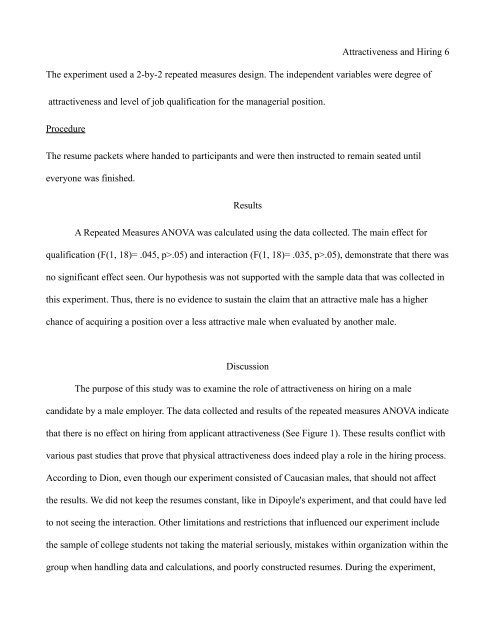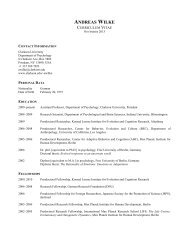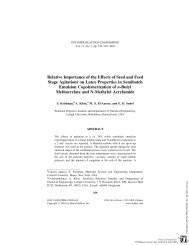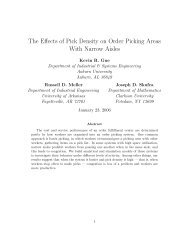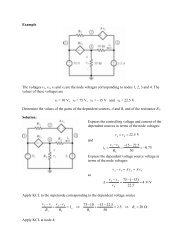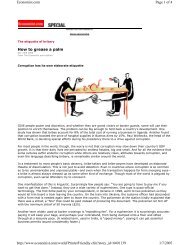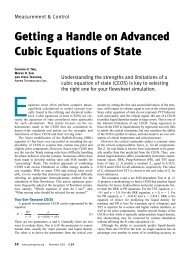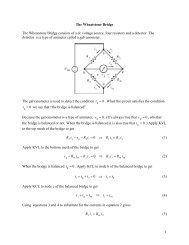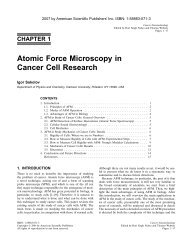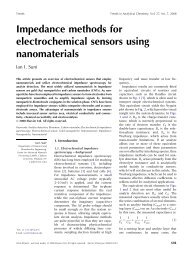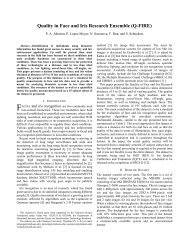ATTRACTIVENESS BIAS - Clarkson University
ATTRACTIVENESS BIAS - Clarkson University
ATTRACTIVENESS BIAS - Clarkson University
You also want an ePaper? Increase the reach of your titles
YUMPU automatically turns print PDFs into web optimized ePapers that Google loves.
Attractiveness and Hiring 6<br />
The experiment used a 2-by-2 repeated measures design. The independent variables were degree of<br />
attractiveness and level of job qualification for the managerial position.<br />
Procedure<br />
The resume packets where handed to participants and were then instructed to remain seated until<br />
everyone was finished.<br />
Results<br />
A Repeated Measures ANOVA was calculated using the data collected. The main effect for<br />
qualification (F(1, 18)= .045, p>.05) and interaction (F(1, 18)= .035, p>.05), demonstrate that there was<br />
no significant effect seen. Our hypothesis was not supported with the sample data that was collected in<br />
this experiment. Thus, there is no evidence to sustain the claim that an attractive male has a higher<br />
chance of acquiring a position over a less attractive male when evaluated by another male.<br />
Discussion<br />
The purpose of this study was to examine the role of attractiveness on hiring on a male<br />
candidate by a male employer. The data collected and results of the repeated measures ANOVA indicate<br />
that there is no effect on hiring from applicant attractiveness (See Figure 1). These results conflict with<br />
various past studies that prove that physical attractiveness does indeed play a role in the hiring process.<br />
According to Dion, even though our experiment consisted of Caucasian males, that should not affect<br />
the results. We did not keep the resumes constant, like in Dipoyle's experiment, and that could have led<br />
to not seeing the interaction. Other limitations and restrictions that influenced our experiment include<br />
the sample of college students not taking the material seriously, mistakes within organization within the<br />
group when handling data and calculations, and poorly constructed resumes. During the experiment,


